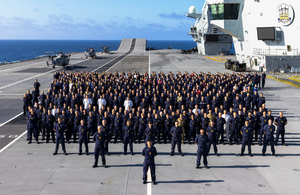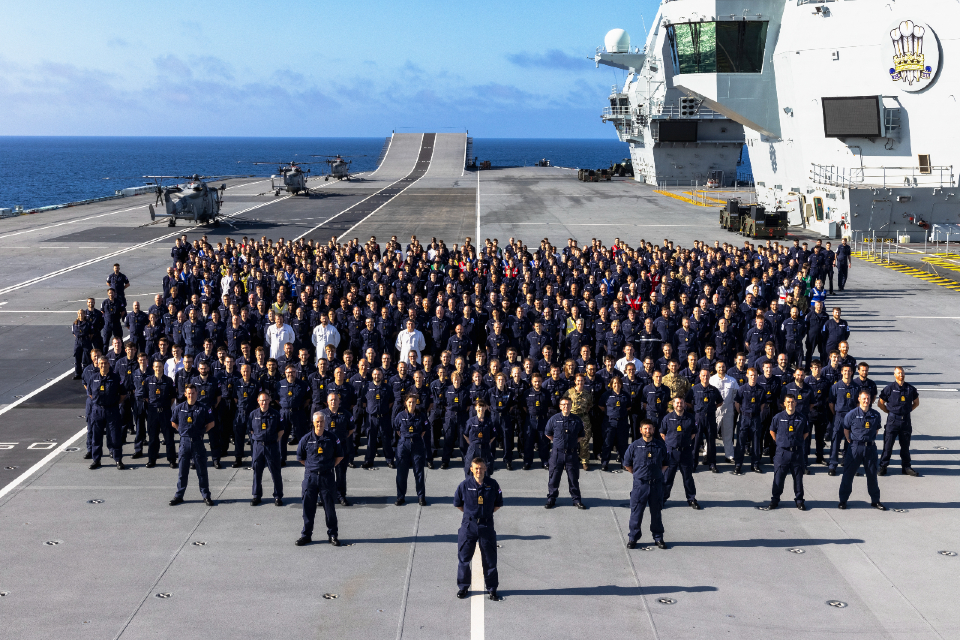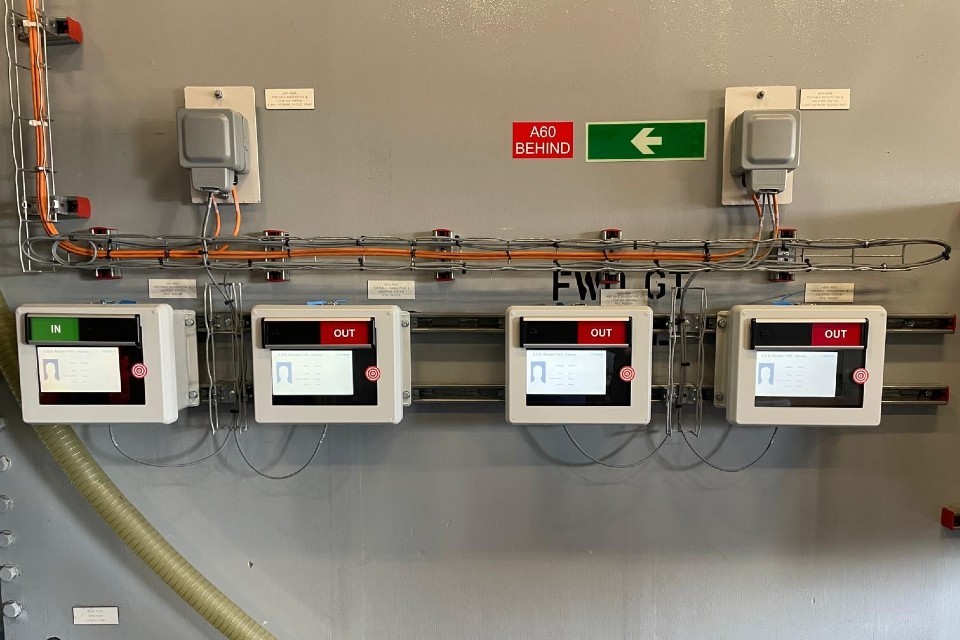Technology beats tradition in Personnel Accounting trial
The safety management requirement to record the presence of sailors on board ships is being overhauled using new technologies being trialled by the Royal Navy.

Royal Navy personnel on the deck of an aircraft carrier
The traditional system for recording sailors entering or leaving a vessel is a simple pegging in/out board. This records the number of Souls on Board (SOB) in cases of an emergency whilst in port and the basis for muster sheets for emergencies at sea. Separate processes for visitors and contractors add to the complexity.
Organised through a Defence and Security Accelerator (DASA) competition, The Defence Science and Technology Laboratory (Dstl) is supporting this project to look at innovative Personnel Accounting and Location (PAL) solutions to account for, muster and locate personnel aboard Queen Elizabeth Class (QEC) carriers in real time.
Owing to the size of the ship, the relatively low size of ship’s company and the high number of compartments, it is currently extremely difficult to accurately locate crew if they have not been seen for some time.
A number of technologies were trialled on several vessels, resulting in the selection of a system by Kinsetsu which delivers a Radio Frequency Identification (RFID)-based solution. This is now being assessed through a Fleet Trial involving HMS Queen Elizabeth (QNLZ) and HMS Prince of Wales (PWLS).
A Fleet Trial of Kinsetsu’s ktrack system installed in both QNLZ and PWLS is being tested to explore the system’s effectiveness on a real Royal Navy vessel and explore the human factors issues associated with SOBs wearing this RFID technology.

Royal Navy personnel on the deck of an aircraft carrier
The scope of this trial has included investigating the merits of a combined HF (High Frequency) and UHF (Ultra High Frequency) identity card worn on a lanyard (around the SOB’s neck) versus tags on bootlaces or sewn into uniforms.
BAE Systems and Kinsetsu installed all of the PAL equipment, cabling and modifications to the INE (Internal Network Electronics) VLAN (Virtual Local Area Network) in PWLS and QNLZ ready to provide an interim PAL capability for operational testing through Op Fortis – the operational deployment of the Carrier Strike Group.
On QNLZ, the PAL functions supported include:
- Accounting via High Frequency (HF) readers (4 each at Starboard Forward, Starboard Aft, Port Forward and Port Aft gangway reception areas); the ingress and egress direction of these readers can be set dynamically to maximise SOB flow on or off the ship.
- SOB registration and querying via 2 client laptops (swapped between Starboard / Port Forward reception areas and Exec / RN Police office) plus 2 registration HF devices.
- Experimental Locating function provided by 6 Ultra High Frequency (UHF) readers plus antennae on 2 and 5 Decks (near laundry, NAAFI and Junior / Senior Rating Mess halls) that can detect when a UHF tag worn by a SOB is near the reader.
- Mustering of SOBs in simulated emergencies via 4 HF readers located at entrances to Junior and Senior Rate Mess halls.
- Mobile registration and accounting HF reader to be used to manage SOBs who arrive / depart the ship via helicopter or boat.

Traditional peg board on HMS Prince of Wales

Gangway ingress readers on HMS Queen Elizabeth
Over the coming months, the trial is being conducted on both ships to build system functional data and capture operator and end user feedback until June 2022. Information gathered will be used to shape a full requirement specification to Defence Equipment and Support (DE&S) for future procurement.
Lieutenant Commander Glen Kerrigan, Capital Ships Weapon Engineer in the Royal Navy and outgoing project sponsor, said:
The PAL project has exceeded expectations; this capability is now providing positive evidence that technology can reduce the Risk to Life (RtL) of Souls on Board and is being used as the primary accounting method on HMS Queen Elizabeth for her global deployment Op Fortis.
To achieve this success on a strategic defence platform in a highly demanding environment is remarkable for any project; to get this far from a tech demo project is unheard of and has been the result of solid collaboration across defence organisations and suppliers.
George Curtis, Dstl Project Manager, added:
The trial and deployment will generate valuable operational feedback, while providing the Royal Navy with a practical interim personnel accounting solution. It will be a significant enhancement to the safety of navy personnel, with potential for adoption on other vessels.